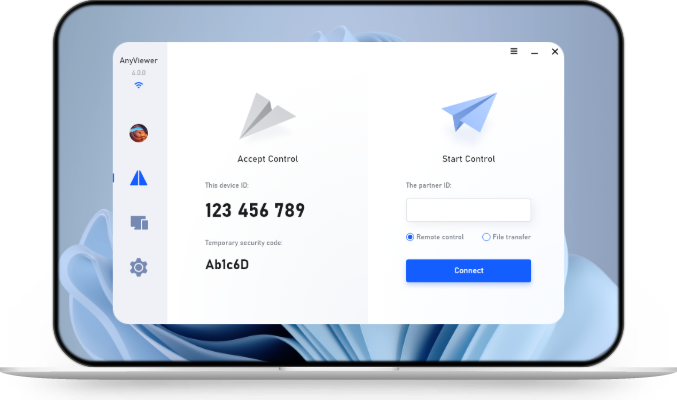The Ultimate Guide to Remote Monitoring Solutions
Delve into an in-depth exploration of remote monitoring solutions, encompassing benefits, key features, implementation strategies, and future trends. Discover how remote monitoring can enhance efficiency, cut costs, and fortify security in your business operations.
Introduction
Welcome to the ultimate guide to remote monitoring solutions! In today's fast-paced business landscape, staying connected and informed about your operations is crucial for success. Remote monitoring solutions offer a comprehensive approach to managing and overseeing various aspects of your business from anywhere, at any time. In this guide, we'll delve into the world of remote monitoring, exploring its benefits, key features, implementation strategies, and future trends. Whether you're a small business or a large enterprise, understanding remote monitoring solutions can revolutionize the way you manage your operations.
Benefits of Remote Monitoring Solutions
Remote monitoring solutions offer a plethora of benefits for businesses across industries. Let's explore some of the key advantages:
Improved Efficiency and Productivity
Remote monitoring solutions enable real-time tracking and analysis of data, allowing businesses to identify inefficiencies and streamline processes.
By remotely monitoring operations, businesses can proactively address issues before they escalate, minimizing downtime and maximizing productivity.
Cost Savings and Resource Optimization
With remote monitoring, businesses can optimize resource allocation by remotely managing equipment, machinery, and other assets.
By reducing the need for on-site inspections and manual monitoring, businesses can save on operational costs and allocate resources more effectively.
Enhanced Security and Risk Management
Remote monitoring solutions provide continuous surveillance of critical assets and infrastructure, helping businesses detect and respond to security threats in real time.
By implementing remote monitoring systems, businesses can mitigate risks such as equipment failure, data breaches, and unauthorized access, safeguarding their assets and reputation.
Key Features of Remote Monitoring Solutions
Remote monitoring solutions offer a wide range of features designed to meet the unique needs of businesses. Here are some key features to look for:
Real-time Monitoring and Alerts
Remote monitoring solutions offer real-time visibility into your operations, allowing you to monitor key metrics and performance indicators from anywhere.
Automated alerts and notifications notify stakeholders of any deviations from predefined thresholds, enabling timely intervention and problem resolution.
Customizable Dashboards and Reporting
Flexible dashboards allow businesses to customize the display of data and metrics based on their specific requirements and preferences.
Advanced reporting capabilities provide insights into trends, patterns, and performance metrics, empowering businesses to make data-driven decisions.
Integration with Existing Systems and Devices
Compatibility with existing systems and devices ensures seamless integration and interoperability, minimizing disruption to operations.
Remote monitoring solutions can integrate with IoT devices, sensors, SCADA systems, and other technologies to provide comprehensive visibility and control.
Implementation Strategies for Remote Monitoring Solutions
Implementing remote monitoring solutions requires careful planning and execution. Here are some strategies to consider:
Assess Organizational Needs and Requirements
Conduct a thorough assessment of your organization's operations, identifying areas where remote monitoring can add value and improve efficiency.
Define clear objectives and goals for implementing remote monitoring solutions, ensuring alignment with your business objectives and priorities.
Select the Right Remote Monitoring Solution
Evaluate different remote monitoring solutions based on factors such as functionality, scalability, reliability, and cost-effectiveness.
Choose a solution that meets your specific requirements and integrates seamlessly with your existing infrastructure and workflows.
Deployment and Integration Best Practices
Work closely with vendors and partners to ensure smooth deployment and integration of remote monitoring solutions.
Train employees and stakeholders on how to use the remote monitoring system effectively, emphasizing best practices and protocols for data management and security.
Case Studies: Successful Implementations
Let's take a look at some real-world examples of companies that have successfully implemented remote monitoring solutions:
Manufacturing Industry
A leading manufacturing company implemented remote monitoring solutions to track equipment performance and optimize production processes.
By remotely monitoring key metrics such as equipment uptime and energy consumption, the company was able to identify bottlenecks and inefficiencies, leading to significant cost savings and productivity gains.
Healthcare Sector
A healthcare facility deployed remote monitoring solutions to monitor patient vital signs and medical equipment in real-time.
By remotely monitoring patient data and equipment status, healthcare professionals were able to provide timely interventions and improve patient outcomes, enhancing overall quality of care.
Future Trends in Remote Monitoring
The future of remote monitoring is brimming with exciting possibilities and innovations. Here are some trends to watch out for:
Emerging Technologies and Innovations
Advancements in IoT, AI, and cloud computing are driving innovation in remote monitoring, enabling more sophisticated and intelligent solutions.
Technologies such as predictive analytics and machine learning will enhance the capabilities of remote monitoring systems, allowing businesses to anticipate and prevent issues before they occur.
Predictions for the Future
Remote monitoring solutions will continue to evolve, becoming more intuitive, scalable, and user-friendly.
The integration of remote monitoring with other emerging technologies such as augmented reality (AR) and virtual reality (VR) will open up new possibilities for remote operations and maintenance.
Conclusion
In conclusion, remote monitoring solutions offer a myriad of benefits for businesses looking to optimize their operations and enhance productivity. By providing real-time visibility, actionable insights, and predictive analytics, remote monitoring solutions empower businesses to make informed decisions and stay ahead of the curve. Whether you're in manufacturing, healthcare, or any other industry, investing in remote monitoring solutions can drive significant improvements in efficiency, cost savings, and risk management.
FAQs
Are remote monitoring solutions suitable for small businesses?
Absolutely! Remote monitoring solutions come in various shapes and sizes, making them accessible and affordable for businesses of all scales. Whether you're a small startup or a large enterprise, remote monitoring can offer tangible benefits such as improved efficiency and cost savings.
How secure are remote monitoring solutions?
Security is a top priority for remote monitoring solution providers. These systems employ robust encryption protocols, access controls, and authentication mechanisms to safeguard data and prevent unauthorized access. With proper implementation and adherence to security best practices, remote monitoring solutions can provide

